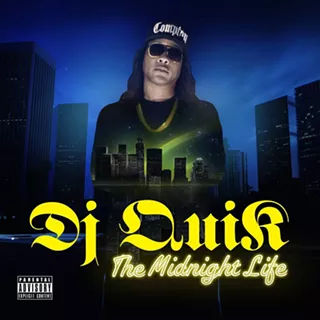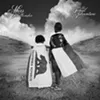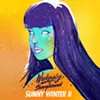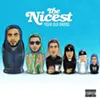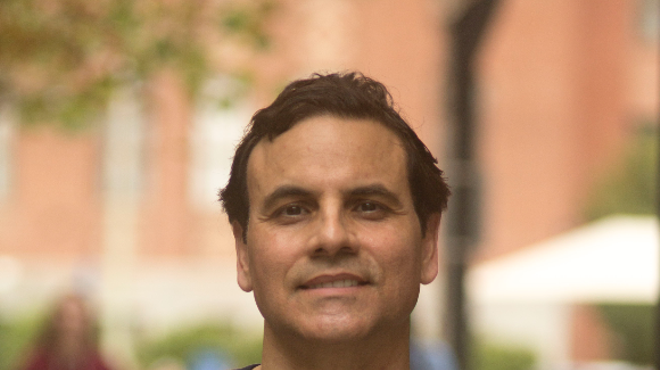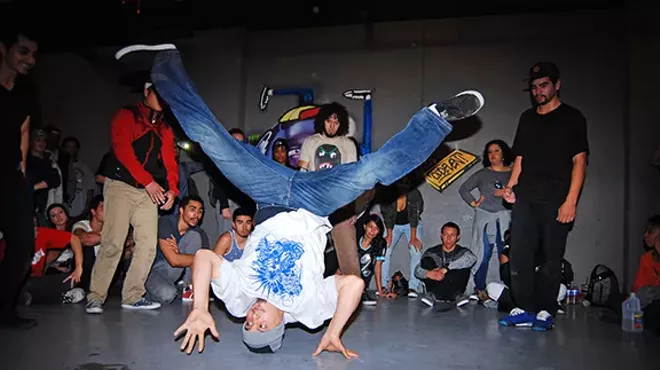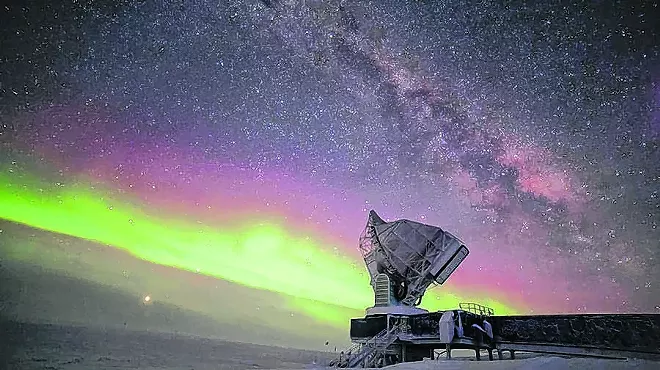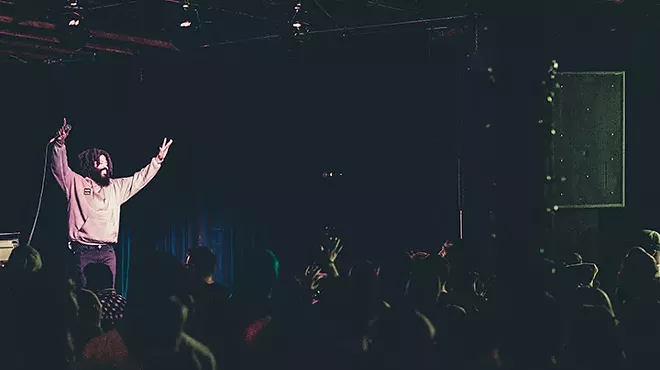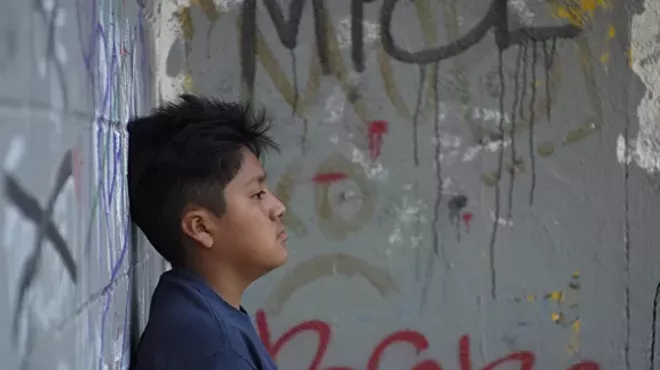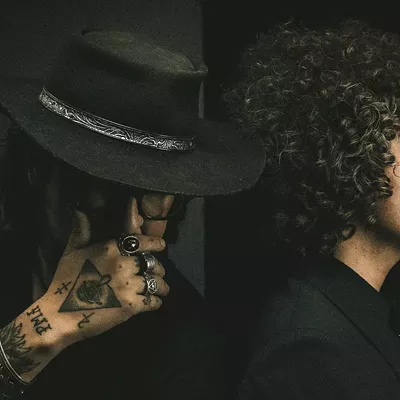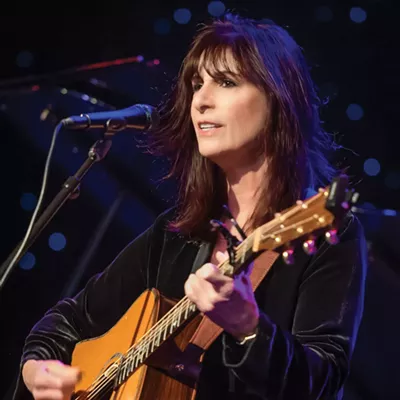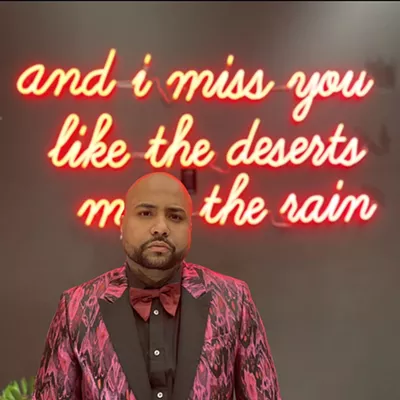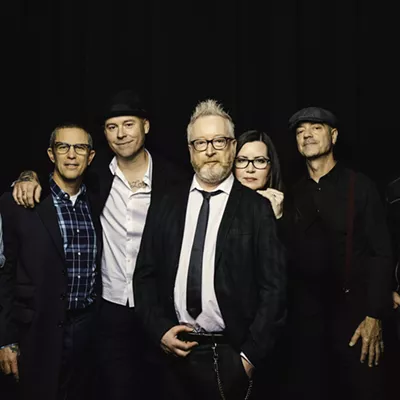Tucson's ever-growing hip hop scene may not have a particular sound to call its own.
But if there's a look that characterizes Tucson hip hop, it's in the designs and artwork of Marco Oliva, known as Marcoso.
With a canvas that includes flyers, T-shirts and especially album covers, Marcoso has worked with an array of rappers and DJs, a who's who of the Tucson scene as well as major national artists: Murs, DJ Quik, Wrekonize, ¡Mayday!, Your Old Droog, Jabee, Cash Lansky, Marley B, Demon Queen, Zackey Force Funk, Jivin Scientists and Jae Tilt.
In addition, he's responsible for the logo of the Tucson Hip Hop Festival, a daylong celebration featuring panels, demonstrations and more than 60 performers on Feb. 24 at 191 Toole.
"I've just always drawn, ever since I was a little kid," he says. "I was into comic books, and I'd show my parents, 'Look, I drew the Ninja Turtles.' When I got into high school, I started doing flyers for my friends who were DJs or rappers."
Raised in El Paso, Marcoso joined the Air Force after high school. In the Air Force, he became known as the go-to guy for artwork, drawing for military coins or squadron patches, or putting together T-shirt designs on request.
Self-taught by his influences—comic books and hip-hop records, posters and the like—Marcoso had developed enough skill to start picking up work for magazines in Japan, like Okinawa Living. His portfolio of illustrations led to some graphic design work, where he picked up the computer skills that he'd need to start moving his work off page and into the realm of shirts.
Marcoso moved to Tucson 13 years ago. He was out of the Air Force, but his wife was still in the service and newly stationed to Tucson. Marcoso started hanging around the now-defunct Vaudeville, then the epicenter of a growing downtown hip hop scene. Bit by bit, he started meeting the local performers, DJs and rappers, who in the early days of MySpace started doing more of their own promotion.
"People found out I drew, I did graphic design, I took photos and that turned into flyers," he says. "I drew what I was into and put it out, whatever imagery came to mind, they said go ahead and make it."
There's an impressive versatility to Marcoso's work, whether it's photography, illustration or design, which comes from his approach to tailoring each piece to the music or artist that it will represent, even if it's someone he knows well and has worked with before.
"A lot of it is driven by the music," he says. "I listen when I'm designing for a particular person. You want to get to know their style and their interests, what they're saying and what they're trying to communicate. There are different feelings to go with each album. Is an album heartfelt? Is it hard? You have to listen and get to know it. Everyone I've worked with, they've come up with something different each time. It'd be so boring if they kept it the same content, so every time I approach it fresh too."
The mysterious power and connection between sound and image has always been an inspiration to Marcoso, whether picking unheard albums based on the art or how quickly an iconic image will recall for fans the music it represents.
"Back in the day, I'd pick out an album by the cover," he says. "I remember picking out DJ Krush when I was in Japan because the artwork was so dope. You look at a little baby sitting on a white background and you know it's Biggie. You see the back of a plane, you know it's the Beastie Boys. You don't have to see the text. It's embedded forever."
Marcoso had been doing flyers and album covers for local artists for years before getting a break and working with a national artist. Through DJ Herm, he met Murs, and with Thomas Haskins, Marcoso co-directed videos for songs like "Owner$hip," "Funeral for a Killer," "Epic Salutations" and "'67 Cutlass."
"Video was something I didn't expect to get into," he says. "We'd come up with ideas based on the song. With Murs, he's a great storyteller, so it was easy to come up with visuals."
Working with Murs was a gateway for Marcoso. "Once I did something with him, people saw me on another level and it opened up more doors," he says. "I owe so much to him."
One of those doors led to working with DJ Quik on the album art for 2014's Midnight Life. That job, Marcoso notes, put him just one degree removed from hip-hop legends like Tupac and Dr. Dre.
"That blew my mind," Marcoso says. "I never had any goals, I just kept working and eventually these opportunities came. I want my work to speak for itself and if it catches somebody's eye, that's how I want it to happen. I just made sure that I delivered."
With a 9-5 job—not to mention a wife and three daughters—Marcoso doesn't have as much time as he'd wish to work on his artwork, but he has a hard time saying no. Still, on top of the album covers and T-shirt designs for others, he managed to launch his own T-shirt line last year, Hondo.us.
Over the years, Marcoso seen the impact of his artwork grow beyond flyers in local shop windows and MySpace accounts to the websites of MTV and Rolling Stone, but he's remained driven by a love and respect for the music.
"It's a big responsibility," he says. "Every artist I've worked with is unique in their own way. What I'm doing will represent how many hours that person put into writing and producing. It's dope, but it's a lot of pressure. It just hit me a couple years ago. I have a small little part in hip-hop history. All these artists have accomplished these great things and I get to be a part of that."

